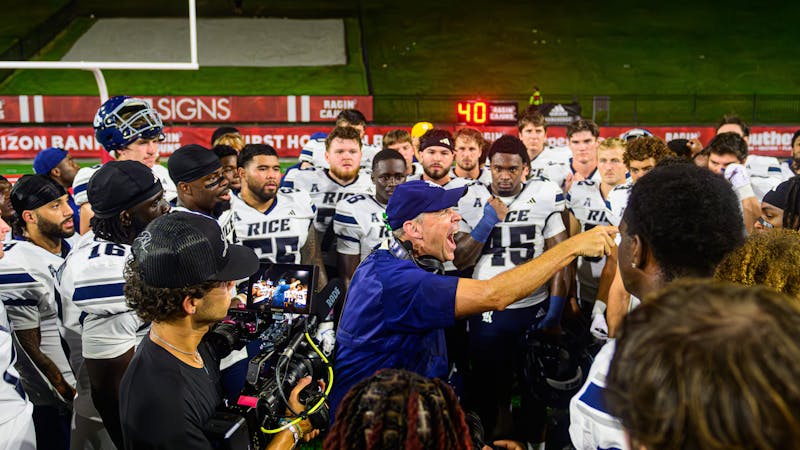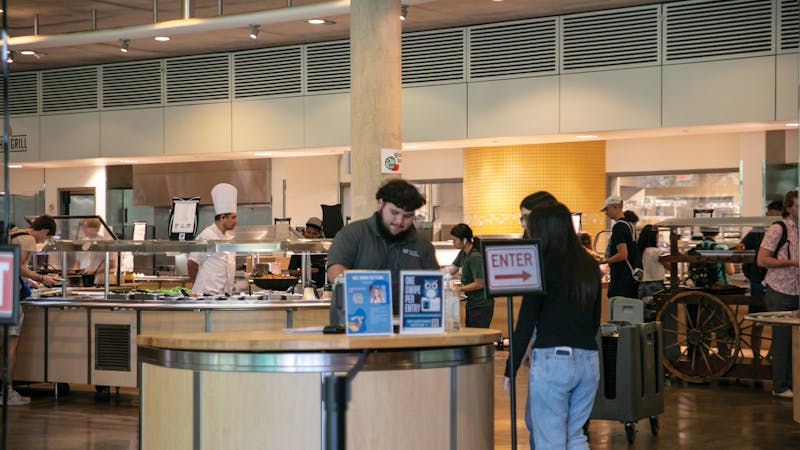AAU survey indicates mostly unchanged prevalence of sexual misconduct at Rice

Content warning: This article contains references to sexual assault.
22.6 percent of undergraduate women and 5.2 percent of undergraduate men surveyed have experienced some type of nonconsensual sexual contact during their time at Rice, according to the Association of American Universities Climate Survey results released earlier this morning.
The AAU survey, administered last spring with the Survey of all Students, surveyed 33 universities with a total of 181,000 validated responses. At Rice, 71.6 percent of undergraduates and 63.8 percent of graduate and professional students completed the survey, compared to an average of 20.4 percent undergraduates and 24.5 percent graduate students amongst the other universities.
“I don’t know that we could have collected better data,” Dean of Undergraduates Bridget Gorman said.
The survey follows the 2015 administration of the Survey of Unwanted Sexual Experience, which showed that at least one in four undergraduate women and one in 14 undergraduate men had faced sexual misconduct at Rice.
In an email to the campus, President David Leebron and Interim Provost Seiichi Matsuda said that the numbers are “deeply concerning and require a thoughtful and determined response.”
RESULTS
The introductory statistic includes a range of sexual contact, from penetration (oral and genital) to sexual touching (kissing and groping). 8.2 percent of undergraduate women and 1.2 percent of undergraduate men at Rice reported penetration by physical force (being held down) or without consent (while passed out, asleep or incapacitated due to drugs or alcohol). Nationally, 11.4 percent of undergraduate women and 2.3 percent of undergraduate men reported similarly.
By background, the prevalence rate of nonconsensual sexual contact for non-heterosexual students overall was 16.6 percent at Rice, compared to a prevalence rate of 5.5 percent for heterosexual students. Students who indicated they have a disability had a prevalence rate of 16.3 percent.
While 4.2 percent of undergraduate women at Rice surveyed said that faculty or an instructor was their offender, 28.9 percent of graduate women reported the same. 90.2 percent of students overall at Rice reported that their offender was another student.
Overall, 10.1 percent of students surveyed said they witnessed a situation that they believed could have led to a sexual assault at Rice. Of those students, 81.4 percent said they took some type of action, with 54.2 percent saying that they directly intervened in the situation.
79 percent of students surveyed at Rice said they thought it would be “very or extremely likely” that campus officials would take a report of sexual assault or misconduct seriously, with 70.4 percent of undergraduate women indicating so and 80.9 percent of men indicating so. Among all transgender men or women, genderqueer or nonbinary, questioning or not listed (TGQN) students, 58.7 percent indicated similarly.
66.5 percent of students overall indicated that it is “very or extremely likely” that an investigation into allegation of sexual assault or misconduct would be fair, with 56.8 percent of undergraduate women, 64.9 percent of undergraduate men and 44 percent of TGQN students indicating so. Nationally, 49.3 percent of students indicated similarly.
Although 33.6 percent of surveyed students reported being “very or extremely knowledgeable” about where to make a report, 17.7 percent of students surveyed reported being “very or extremely knowledgeable” about what happens after an incident has been reported.
10.6 percent of students surveyed said that sexual assault and other misconduct at Rice is “very or extremely” problematic, with 19.5 percent of undergraduate women, 10.4 percent of undergraduate men and 20.8 percent of TGQN students reporting so. Nationally, 24.8 percent of students indicated that sexual assault and misconduct was “very or extremely” problematic on their campuses.
While 7 percent of undergraduate women said that they thought it was “very or extremely likely” that they will experience sexual assault or other misconduct at Rice, 1 percent of undergraduate men reported similarly.
RESPONSE RATE
According to the administration’s executive summary, Rice had the highest response rate among the institutions surveyed. According to Associate Vice President for Institutional Effectiveness John Cornwell, this is most likely due to Rice’s system of the semesterly Survey of All Students, which ties completion of surveys to class registration, although the AAU survey was optional.
“People who have had things happen really want to answer it, people who haven’t really don’t,” Groamn said. “Response rate is a part of it, but there are a lot of reasons why people may or may not participate in the study.”
Although the university response rate was originally closer to 80 percent, the AAU survey eliminated responses from respondents who took less than five minutes to complete the survey or didn’t answer at least one question in the sections regarding sexual misconduct, harassment and stalking.
FROM SUSE TO AAU
Rice did not participate in the first iteration of the AAU survey, which was released in 2015, instead choosing to participate in the SUSE. According to Associate Dean of Undergraduates Allison Vogt, the administration decided to participate in the AAU survey this year instead of the SUSE because the AAU survey is a climate survey on universities’ environment surrounding sexual behavior and expectations, while the SUSE was a survey of incidents.
In light of the SUSE results, the Critical Thinking in Sexuality workshop was created along with the Students Transforming Rice into a Violence-free Environment liaison program. While the data sets from the SUSE and the AAU are not easily comparable, the administration was able to split the data by school year to look at the differences between students who had CTIS and those who didn’t.
“There is tentative evidence that there is some decline among those first and second year students and we don’t see a comparable decline for third and fourth year students,” Gorman said.
According to Vogt, in the last five years, the Title IX office has also expanded. Gorman said they are anticipating further expansions.
NEXT STEPS
Gorman said the administration wanted to give the student body a few days to read the report before discussing its results and that they have been in communication with Grace Wickerson and Hannah Pearce, SA and GSA president respectively. Wickerson and the SA are hosting a town hall on Monday at 8 p.m., where they will discuss survivor support, Student Judicial Programs reporting and process and CTIS, according to Wickerson.
Gorman said she thinks more students will pay attention to the AAU results given the protests and coverage of the last two weeks following the anonymous opinion detailing a Rice alumna’s experience reporting to SJP.
“It’s brought more of a scope on this issue for Rice,” Gorman said. “I would hope it causes [an] even broader selection of our population to really look at it and think about what it means.”
Gorman said that the administration “always knew this was going to be a year where Title IX was front and center” given the release of this survey data, impending new Department of Education guidelines and changes in Texas legislature regarding mandatory reporting.
“If [SUSE] was phase one, then what’s phase two of our response? We have another point where we can take a tally of where our community’s at. Where do we go from here?” Gorman said. “We don’t view this as done by any stretch of the imagination.”
Editor’s Note: The Thresher plans to release an in-depth look at the AAU data, as well as coverage of the SA town hall, in the upcoming week.
More from The Rice Thresher

Rice football kicks off Abell era with commanding road win
For the first time since 2018, Rice football opened its season with a victory. Scott Abell was soaked with yellow Powerade following a 14-12 win on the road Saturday against the University of Louisiana at Lafayette, which won 10 games and made it to the Sun Belt Conference championship last season.

Dis-O, move-in weekend see increase in alcohol transports from last year
Rice’s first wet weekend of the year saw four times as many calls for intoxication-related transports of students to the hospital compared to the previous three years, according to emails sent out by college presidents and chief justices.

On-campus meal plan changed to unlimited swipes
Housing and Dining recently revealed a new dining plan for the upcoming semester. The required on-campus meal plan now has unlimited meal swipes, compared to 375 meal swipes last year. H&D said the previous on-campus meal plan was for students who intended to eat on campus 15 to 25 meals a week.

Please note All comments are eligible for publication by The Rice Thresher.